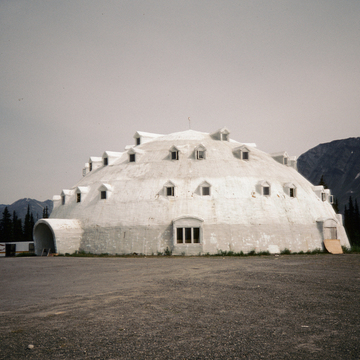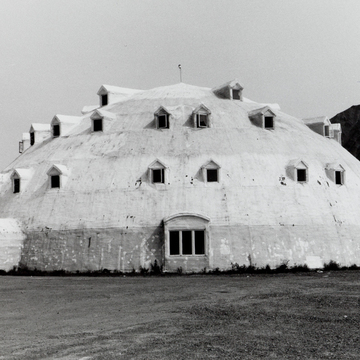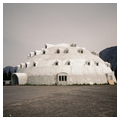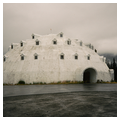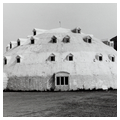The closest thing to a traditional snow-block igloo in Alaska, this four-story hotel is the vision of one man, Leon Smith, who designed and built it, beginning in the early 1970s. It remains unfinished, with projected completion in 1992. Smith felt that it was “appropriate that Alaska have an igloo.”
The circular-plan, wood-framed building contains 888 sheets of plywood, covered with urethane insulation on the outside, giving it its snowlike finish. The building has a four-story atrium, with forty-eight pie-shaped rooms opening onto interior balconies. On the first floor is the dining room (to seat ninety), kitchen, gift shop, and offices, as well as additional bedrooms. Though unusual in design and execution, the hotel conforms to building codes.
Such expressive buildings, known as “ducks,” are rare along the highways of Alaska. The igloo—the residential form most associated with Alaska, correctly or not—makes a vivid advertisement to the passing automobiles.

